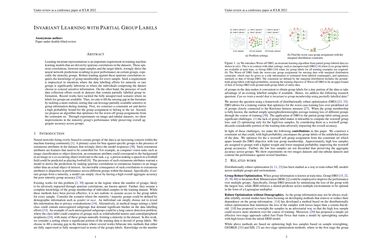Invariant Learning with Partial Group Labels
Learning invariant representations is an important requirement in training machine learning models that are driven by spurious correlations in the datasets. These spurious correlations, between input samples and the target labels, wrongly direct the neural network predictions resulting in poor performance on certain groups, especially the minority groups. Robust training against these spurious correlations requires the knowledge of group membership for every sample. Such a requirement is impractical in situations where the data labelling efforts for minority or rare groups is significantly laborious or where the individuals comprising the dataset choose to conceal sensitive information. On the other hand, the presence of such data collection efforts result in datasets that contain partially labelled group information. Recent works have tackled the fully unsupervised scenario where no labels for groups are available. Thus, we aim to fill the missing gap in the literature by tackling a more realistic setting that can leverage partially available sensitive or group information during training. First, we construct a constraint set and derive a high probability bound for the group assignment to belong to the set. Second, we propose an algorithm that optimizes for the worst-off group assignments from the constraint set. Through experiments on image and tabular datasets, we show improvements in the minority group’s performance while preserving overall aggregate accuracy across groups.
PDF Abstract
 MNIST
MNIST
 CelebA
CelebA